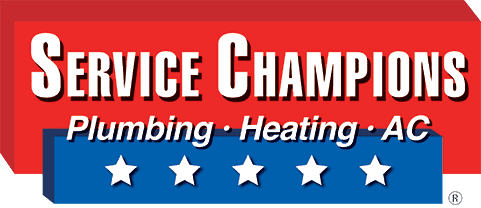What’s In Your Gas Furnace?
The gas furnace in your home costs thousands of dollars to buy and install. Fortunately, it takes far less to maintain. In addition to regular gas furnace maintenance, homeowners should have a basic understanding of how their gas furnaces work. This way, they can learn to identify problems and help the gas furnace system last as long as they need it.
The three core components homeowners should pay attention to include the:
- Air filter
- Blower motor
- Heat exchanger
There are several other parts to the gas furnace, but those do not require as much attention from the homeowner as from the technician. By caring for these three parts, your gas furnace will work better, last longer and deliver the heating you want.
The Gas Furnace Has an Air Filter to Clean Air
The air filter is typically located near the blower compartment. It is responsible for separating solid particles from the home air before it enters the gas furnace or air conditioner.
Air filters should be replaced often. Most homeowners choose to replace air filters twice a year. This ensures that both home air and the gas furnace remain clean and healthy.
When homeowners forget to change the air filter to the gas furnace, many problems occur.
- Indoor air quality plummets
- Buildup grows inside the furnace
- Damages collect
- Gas furnace makes noises or smells
- Energy spending rises
- Gas furnace service slows
To avoid these problems with your gas furnace, change the air filter. It is very simple to do and protects the gas furnace from expensive repairs and permanent damages.
The Gas Furnace Has a Blower Motor to Move Air
The blower motor is a fan that pushes and pulls air through the air duct system. Without the blower motor in proper working condition, air will not move even if the rest of the gas furnace is healthy.
The blower motor needs to be kept lubricated and oiled in order for it to spin freely. If buildup grows around it, spin motion will slow with the added resistance.
If you experience limited or slow airflow, consult your preferred HVAC contractor. There may be an issue with the blower motor of your gas furnace. Possible explanations include:
- Obstruction caught on the fan blades
- Sticky or burnt motors
- Tough grime and buildup
- Disconnected wirework
Homeowners also need to keep this in mind: the gas furnace system is built to affect every part of the home. As a result, the health of the gas furnace influences the health of the home.
For example, microbiological growth is a common problem. Not only does microbiological growth pollute home air, it also creates bothersome odors and even damages surrounding parts of the gas furnace. Every time homeowners turn on the thermostat, particles of microbiological growth float through the airflow and into the house. The same air is picked up again and enters the gas furnace to be reheated or cooled.
As a result, homeowners should stay attentive to changes in home comfort quality. It may be reflecting a problem within the gas furnace.
The Gas Furnace Has Burners and a Heat Exchanger to Warm Air
The heart of the gas furnace is the heat exchanger.
How does the heating process begin? First, the manifold draws gas from the appropriate valve. Then, the pilot light is ignited. The heat exchanger is a clamshell like apparatus where the live flame is held. This is central to the heating process.
Because of how the heat exchanger is shaped and what it does, there is one situation homeowners should be careful to avoid. When the gas furnace is not cleaned or maintained, pollutants and bacteria enter the furnace. These particles coat the heat exchanger and become a type of glue that seals the two sides of the fire exchanger together. The pilot light struggles to ignite a flame with limited oxygen. As it continue to repeat attempts, the amount of gas released builds. When fire finally meets gas, there’s a “boom” from a tiny explosion. Generally, when the gas furnace reaches this point, the safety switch will trip, shutting down operation in order to prevent accidents. This is also when an HVAC contractor will need to service the gas furnace.
If homeowners hear this sound, they should immediately turn off the gas furnace and refrain from use until it is serviced.
Keep Your Gas Furnace Healthy with Service Champions
Service Champions HVAC experts are the preferred technicians of Southern California. We are the only Diamond Certified HVAC provider for Orange and Los Angeles Counties. Homeowners depend on us for superior technical care and genuine customer service.
Service Champions teams care for your gas furnace with undivided attention, top class training and extensive experience. We guarantee your total satisfaction. To meet your specialist from Service Champions, complete the form below.

